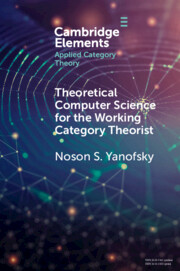Element contents
Theoretical Computer Science for the Working Category Theorist
Published online by Cambridge University Press: 25 January 2022
Summary
- Type
- Element
- Information
- Online ISBN: 9781108872348Publisher: Cambridge University PressPrint publication: 03 March 2022
References
- 2
- Cited by



